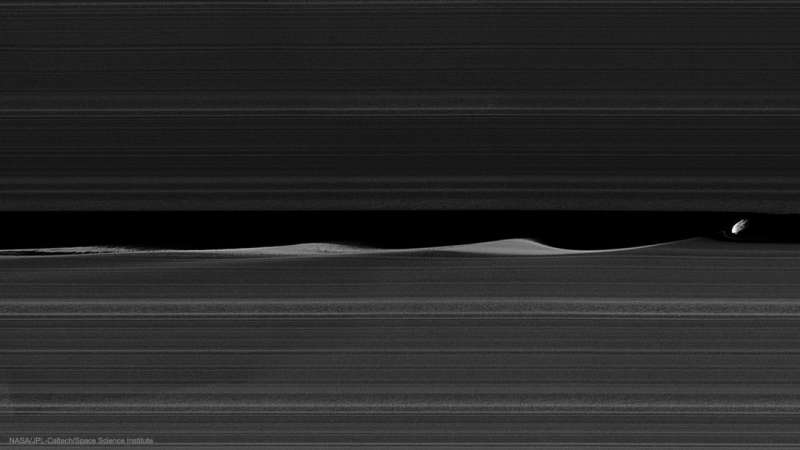
|
Explanation: What's happening to the rings of Saturn? Nothing much, just a little moon making waves. The moon is 8-kilometer Daphnis and it is making waves in the Keeler Gap of Saturn's rings using just its gravity -- as it bobs up and down, in and out. The featured image is a wide-field version of a previously released image taken last month by the robotic Cassini spacecraft during one of its new Grand Finale orbits. Daphnis can be seen on the far right, sporting ridges likely accumulated from ring particles. Daphnis was discovered in Cassini images in 2005 and raised mounds of ring particles so high in 2009 -- during Saturn's equinox when the ring plane pointed directly at the Sun -- that they cast notable shadows.
|
January February March April May June July August September October November December |
| ||||||||||||||||||||||||||||||||||||||||||||||||
NASA Web Site Statements, Warnings, and Disclaimers
NASA Official: Jay Norris. Specific rights apply.
A service of: LHEA at NASA / GSFC
& Michigan Tech. U.
Based on Astronomy Picture
Of the Day
Publications with keywords: Saturn - rings
Publications with words: Saturn - rings
See also:
- APOD: 2025 September 25 Á Saturn Opposite the Sun
- APOD: 2025 September 22 Á Equinox at Saturn
- APOD: 2025 February 23 Á Saturn in Infrared from Cassini
- APOD: 2024 December 8 Á Aurora around Saturns North Pole
- Saturn at Night
- APOD: 2024 August 27 Á Moon Eclipses Saturn
- APOD: 2024 June 23 Á The Colors of Saturn from Cassini
